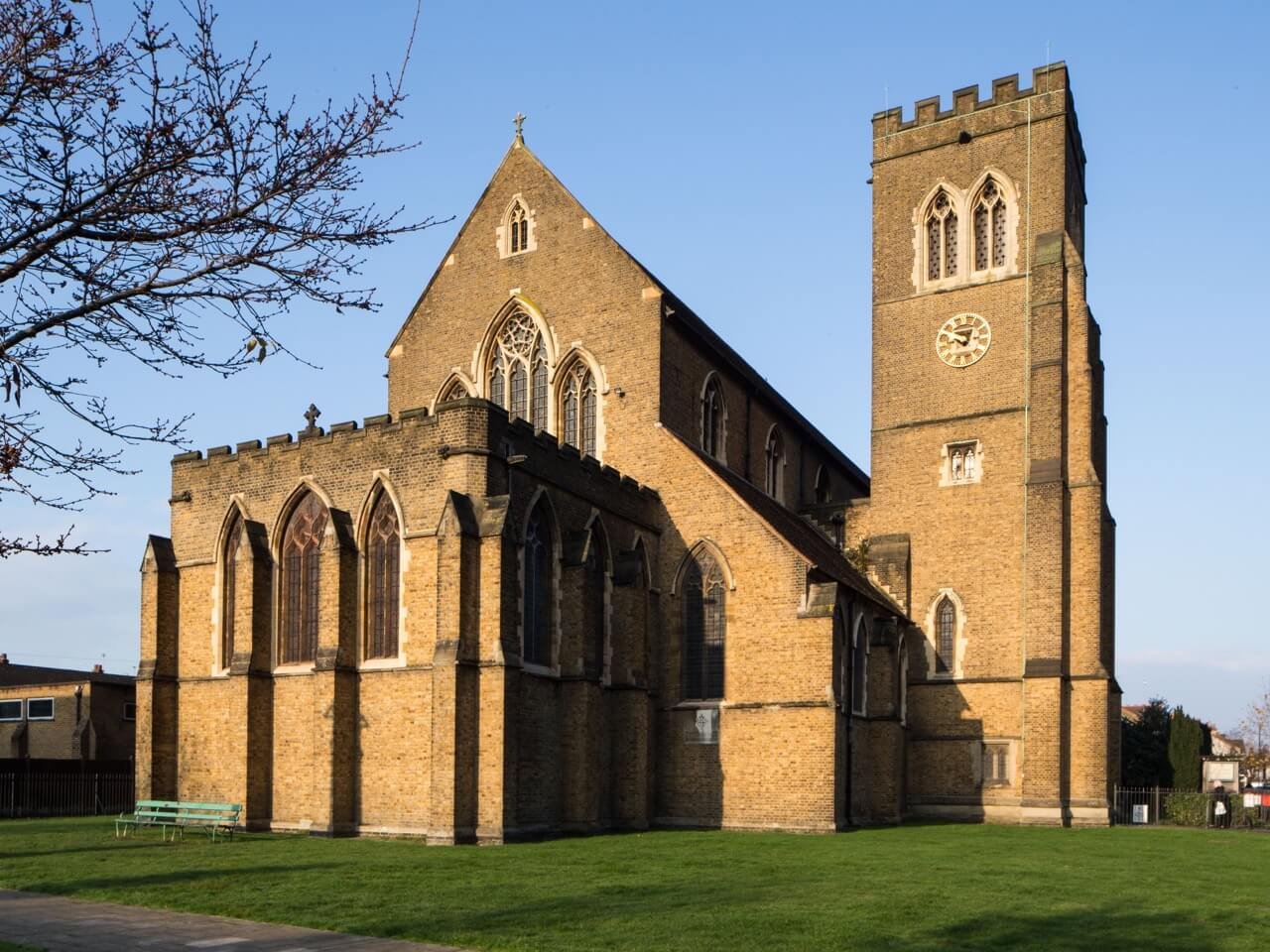
History
All Saints was built in 1906 and is Grade II listed. It is so striking that it was called ‘The Cathedral of South London’ by the poet John Betjeman and the architectural scholar Nikolaus Pevsner.
The church was built with a bequest from Lady Brudenell-Bruce, in memory of her husband, Lord Charles Brudenell-Bruce. Tooting Graveney was chosen because of London County Council plans to build a new estate in the area, and the consequent need for a parish church to serve this expanding community. Worship began on the site in 1903, in a tent, and the church itself was finished and consecrated in July 1906. All Saints has served the diverse and changing community in this part of London ever since.
The history of All Saints is an uplifting story of a vibrant community of worship and ministry, interspersed with the continual challenges of maintaining and developing such a building – a story which continues to this day.
Designed by Temple Moore, the building is in the style of English church architecture of the 14th century. The huge altarpiece, which dominates the interior, came from Bologna and is a copy of ‘Christ Crucified’ by Velasquez. Other parts of the interior (choir stalls, wrought iron chancel grille, reredos in the chapel) were sourced from different parts of Europe, and are much older than the church building itself – 16th and 17th century in some cases.
The bell tower has a peal of 8 bells, which came from the redundant church of Holy Trinity, Paddington, and were re-cast and hung in All Saints in 1968. The current parish centre, including the Bruce Hall, was built in the early 1980s after the earlier church hall had to be demolished.


